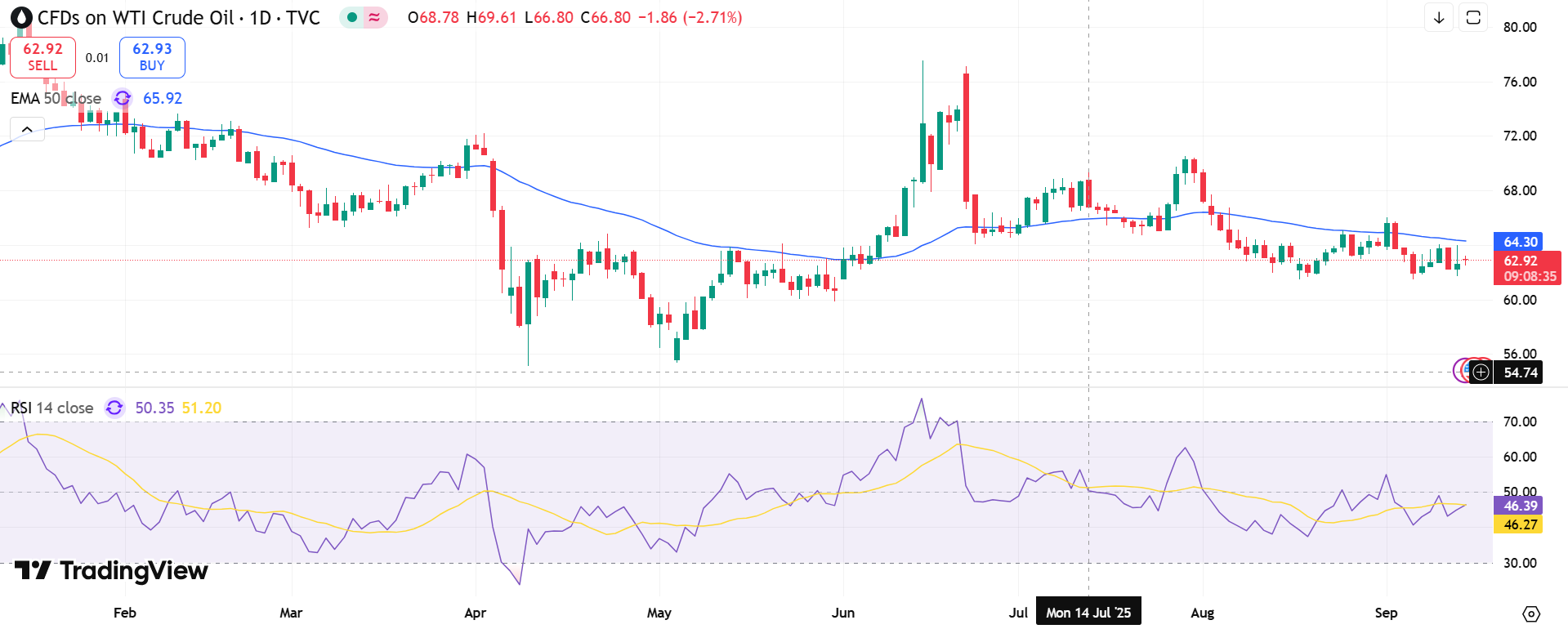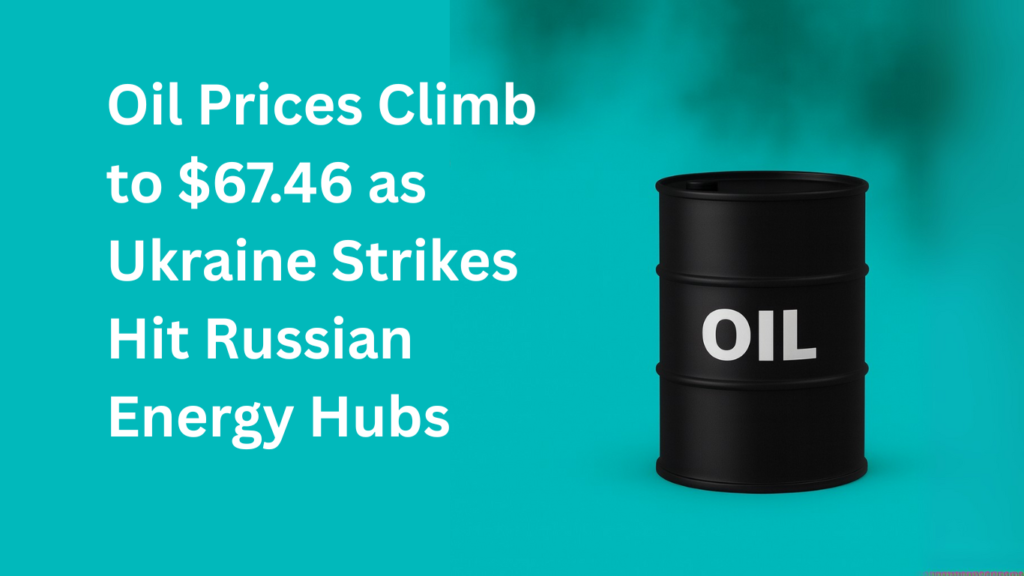Oil prices gained further on Monday as markets weighed the fallout from Ukrainian drone strikes on Russian energy infrastructure. Brent crude futures rose 47 cents, or 0.7%, to $67.46 a barrel by 06:22 GMT, while U.S. West Texas Intermediate (WTI) advanced 48 cents, or 0.8%, to $63.17. Both benchmarks had already risen more than 1% last week amid escalating tensions.
The latest attacks targeted two key facilities: Primorsk, Russia’s largest oil export terminal, and the Kirishi refinery, one of the country’s top two processing plants. JPMorgan analysts, led by Natasha Kaneva, said the strikes highlight “a growing willingness to disrupt international oil markets,” potentially adding upward pressure to prices.
Primorsk, with capacity to handle about 1 million barrels per day (bpd), is vital for Russia’s crude shipments. The Kirishi plant, run by Surgutneftegaz, processes 355,000 bpd—roughly 6.4% of the nation’s refining capacity. Market participants now view Ukraine’s focus on oil infrastructure as a possible strategic shift.
Key Market Drivers in Focus
While supply risks dominate headlines, other factors are shaping sentiment.
- Geopolitical risks: Attacks on Primorsk and Kirishi raise concerns over sustained disruptions.
- U.S. sanctions threat: President Donald Trump reiterated Sunday he is ready to tighten measures against Russia.
- OPEC+ output plans: Producers aim to increase supply, complicating the price outlook.
- Economic signals: Softer U.S. payroll data and inflation fears cloud demand expectations.
Tony Sycamore, an analyst at IG Markets, warned that if Ukraine continues targeting oil export facilities, forecasts for global supply could shift higher despite OPEC+ production growth.
Global Politics and Demand Outlook
The conflict adds strain to broader geopolitical dynamics. In Russia’s Bashkortostan region, local officials confirmed oil companies would maintain production levels despite recent drone damage. Meanwhile, investors are closely tracking U.S.-China trade talks in Madrid, which began Sunday. Washington has pressed allies to impose tariffs on Chinese goods tied to its Russian oil imports, adding another layer of uncertainty.

At the same time, the U.S. economic picture remains mixed. Job creation slowed last week while inflation edged higher, stoking worries about growth in the world’s largest oil consumer. Markets widely expect the Federal Reserve to cut rates at its September 16–17 meeting, a move that could support fuel demand if borrowing costs ease.
For now, traders are bracing for volatility as geopolitical risks clash with economic headwinds. The combination of Ukrainian strikes, supply-side decisions, and shifting monetary policy will likely set the tone for oil markets in the weeks ahead.


